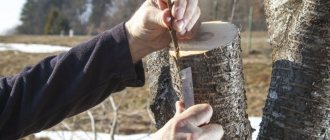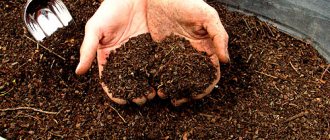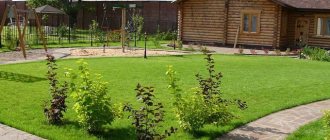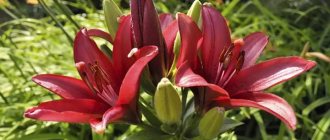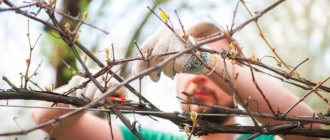A lawn in a country house is an almost obligatory design element, which serves for rest and relaxation and is simply pleasing to the eye. But to prevent this “green beauty” from fading and fading, lawn grass must be saturated with microelements and nutrients.
Such a decorative element of the garden as a lawn needs regular feeding. This is because lawn grass is an intensively cultivated crop, which at the same time is periodically “renewed” and deprived of nutrients accumulated in the stems. Without regular application of nitrogen, phosphorus, potassium and iron, the lawn will quickly lose its attractive appearance and become just a clearing with withered grass. Today we will tell you how often and in what quantity you should apply lawn fertilizers.
When to fertilize your lawn for the first time in spring?
As soon as the snow has melted on your property, you need to start fertilizing the lawn. The very first fertilizing stimulates the growth of lawn grasses. The soil, damp after winter, absorbs all useful elements well. If part of the lawn is covered with snow or a crust of ice (snow may melt unevenly), be sure to clear the grass using a rake or shovel handle (you can use it to pierce the ice). Otherwise, under the ice crust, the grass may not have enough air, it will die and bald spots will form on the lawn.
The ice crust must be removed from the lawn in the spring, otherwise the grass may suffocate under it.
If the lawn is small, it is better to remove the remaining snow from the path so as not to step on wet soil and damage the lawn plants, otherwise you will have to subsequently add soil and replant them.
Content
- 1. Why do we need fertilizer for lawns?
- 2. When should I fertilize my lawn?
- 3. How to fertilize your lawn?
- 4. Liquid or granular?
In gardening matters, we really don’t like to systematically do two things: treat plants with chemicals to prevent pest diseases and use fertilizers. The latter are often expensive and often raise doubts like “is it necessary? And so it grows!”, and of course the question of harmfulness arises - it’s chemistry! However, in the case of lawn fertilizer, these doubts are completely unjustified , and for good reason.
How many times should you fertilize your lawn in spring?
It is necessary to feed the lawn several times in the spring:
- as soon as the snow melted;
- after the first mowing, approximately 2 weeks after the first fertilizing (at this time the soil has already warmed up and a stable positive air temperature has established itself - +5–10 ° C);
- then every one to two weeks until the end of spring.
Sometimes the lawn is not fertilized after the first mowing if the weather is warm and the grasses grow well on their own.
Liquid or granular?
There are granular (“long-lasting”) and liquid concentrated fertilizers on sale. The latter just need to be diluted with water and the resulting solution watered over the lawn. This method guarantees an accelerated effect, since the liquid is quickly absorbed and immediately enters the tissues of the cereals. True, the effect of such fertilizers is short-term, given that in the summer the lawn is actively used.
- Use granular fertilizer in spring and fall .
- Use liquid fertilizers during the main growing season (late spring and summer) as an additional feeding , because... they give faster results. This is convenient, for example, if the lawn is damaged by return frosts in the spring, diseases/pests, or heavy trampling.
IN THE PHOTO: To evenly distribute liquid fertilizers, you can use a watering can with a nozzle, but for large areas it is better to take a special pump-type sprinkler.
Regardless of the type of fertilizer and method of fertilizing, a number of rules must be observed.
- Before applying fertilizer, the lawn must be cut and cleaned.
- Immediately before treatment (several hours or better a day), the lawn needs to be watered generously. The grass itself should be dry on top and the soil moist ( but not wet! )
- After applying fertilizers, keep children and animals away from the area for 24–48 hours.
- Do not feed the grass in rainy weather or drought, because... nutrients will not be delivered in the required volume.
- Follow the instructions exactly. Exceeding the recommended dose in extreme cases can lead to the death of individual plants in the lawn (but most often, more aggressive grasses begin to grow actively: pasture ryegrass, bentgrass).
The ideal conditions for fertilizing are moist soil and dry grass. If there is no rainfall for a long time, then you need to moisten the area in advance and let the grass dry.
Types of spring fertilizers for lawns
There are three types of fertilizers:
- the first ones are applied when laying the lawn before sowing;
A special organic-mineral fertilizer to increase soil fertility improves the survival rate of lawn grasses
the latter are used seasonally - for example, in the spring before active growth begins, so that the plants receive the necessary nutrition; still others are used only in case of unfavorable weather conditions (so-called stressors) - for example, to save the lawn from a sudden cold snap.
Features of seasonal feeding - spring, summer, autumn
The effect of minerals when feeding the lawn is shown in the table:
| Fertilizer name | Purpose | Terms of use | Flaws |
| Nitrogen – Ammonium nitrate | Stimulates the growth of vegetative organs of plants, especially stems and leaves | Not used during sowing, applied for the first time after mowing the sprouted lawn. In the future, fertilizing is carried out at the end of March, beginning of April after the snow has melted and the lawn has been cleared of dry plant residues. Apply once every 10-14 days until mid-June. | An excess of nitrogen fertilizers provokes the growth of fungal pathogens. Application in the second half of summer leads to excessive growth of green mass. By winter, the lawn does not have time to get stronger and freezes in the cold. |
| Phosphorus - superphosphate, double superphosphate | 1. Stimulates root growth after sowing. 2. Actively participates in the synthesis of chlorophyll, therefore affecting the brightness of the color. 3. Promotes the growth and strengthening of the root system. Thanks to this, a uniform and powerful turf is formed. | Apply to the soil during sowing. For established lawns, it is used in large quantities in the second half of summer and autumn. The last feeding is carried out 2 weeks before the onset of stable cold. | Excessive application of phosphorus fertilizers causes intense root growth, which leads to excessive compaction of the turf. Because of this, air and water do not flow in the required quantities. If you don't aerate, your lawn will die. |
| Potassium – Potassium salt | Acts as a protector of plant cells. Thanks to this, water is retained in the tissues of lawn grasses, the elasticity of leaves and resistance to fungal diseases increases. | They are used in any season, but are most relevant in mid-summer in the heat and in the fall to prepare for winter. During these periods, the amount of active substance increases. | Potassium salt contains chlorine, which can accumulate in the soil. |
Tip #1. In mid-summer, when lawn growth slows, the use of nitrogen fertilizers is minimized.
The lack of at least one of these elements affects the quality of the lawn and its decorative effect. That is why experts have developed special mixtures of complex fertilizers, which include nitrogen, phosphorus and potassium compounds. The lawn needs them in large quantities, which is why they are called macroelements.
In addition to them, fertilizing includes micronutrients, which plants consume in smaller doses, but their lack immediately affects the condition of the lawn. A wide range of products are available for sale, tailored to suit seasonal use.
How to apply fertilizers correctly
There are several ways to fertilize your lawn in the spring. Dry fertilizers:
- manually scatter on the lawn while the young grass has not yet sprouted - the method is ineffective, labor-intensive, and the nutrients are distributed unevenly. To scatter the granules more evenly, they can be mixed with sand;
- use a mechanical garden diffuser - less time and effort is spent, and medications are saved.
The mechanical spreader allows precise distribution of fertilizer over the lawn and, thanks to the wide tires, rides well on uneven ground
Liquid fertilizers are diluted according to the instructions and poured into a container for spraying (sprayers can be used to treat garden trees).
Choosing the right fertilizer
Experts usually use mineral fertilizers for the lawn - nitroammophoska, azofoska and preparations with a similar composition that intensively nourish vegetation. Considering that the nitrogen contained in nitroammophoska is washed out quite quickly, urea is used at the same time. Nitrogen is released from it gradually, since it is contained in amide form, and is able to nourish the soil for about a month.
In order for the lawn to acquire a bright color, use urea and ammonium sulfate, each 20 g per 1 square meter. m. Potassium is necessary for frequent rains. Potassium salt is added in an amount of 20 g per 1 square meter. m twice throughout the summer. The exception is frequent heavy rains, then the frequency of potassium treatments is increased.
When summer comes to an end, the grass no longer needs nitrogen, but phosphorus supplements will come in handy. They can be obtained from superphosphate (50 g per 1 sq. m). Additionally, potassium is added (20 g per 1 sq. m). A prerequisite is to fertilize the grass on a different day than the day when it is cut, otherwise the plant will be severely stressed.
Fertilizer for planting a lawn in the form of wood ash will be an inexpensive and useful product. Nettle ash is well suited - it is mowed, dried and burned. The ash is diluted with water in a ratio of 1:10 and the solution is used for irrigation.
You can notice a lack of nutrients with the naked eye:
- pale grass, slow growth - nitrogen deficiency;
- lilac tint and fragility of stems - lack of phosphorus;
- grass burns - lack of potassium.
When choosing the best all-purpose lawn fertilizer, it is important to be careful with dosages. Excess nitrogen weakens the grass's defense system, making it more susceptible to disease. Excess phosphorus causes growth to stop because other beneficial substances are no longer absorbed. Excessive amounts of potassium burns roots.
Video: useful expert advice
In order to always have an emerald lawn that pleases the eye, you need to take care of it: water it, sow it if necessary, and fertilize it. Work on the lawn begins in early spring, and the appearance of the lawn in summer depends on how complete and correctly it is done.
- Author: Natalya Nekrasova
Philologist by training. I have been writing articles since 2015. Rate this article:
- 5
- 4
- 3
- 2
- 1
(0 votes, average: 0 out of 5)
Share with your friends!
How to fertilize - methods of fertilizing
To avoid bald spots on your lawn, as well as different colors of grass stems, you need to learn how to properly feed your lawn. Let's discuss three ways:
- Manual method. Remember when you sowed lawn seeds? First along, then across. Repeat the same with fertilizer. In this way, you can apply complex fertilizers, organic manure and peat.
- Sprayer and watering can. Use this gardening utensil for liquid fertilizers diluted in water. In the same way, you can fertilize peat and mullein soaked in water. Don't forget about safety measures: gloves, protective suit. If you are the happy owner of a large area of green grass, then to save effort and time it is better to use a sprinkler.
- Mechanical method. Using a special seeder that moves across the lawn, you can disperse the lawn fertilizer evenly. After using the utensils, they must be thoroughly washed and dried.
Manual and mechanical methods of fertilizing the lawn
All three methods of applying fertilizer will be effective if you properly dilute the fertilizer in water and distribute it evenly over the area, and also for good digestibility of the fertilizer, the grass needs to be watered.
Moss on the site - how to protect the grass
In addition to fertilizing, an area with grass needs timely removal of moss. This is a representative of the plant world that has no roots. Grows where there is moisture and little sunlight.
If moss has taken root on the lawn, this means that the soil is acidic. It's time to remember about lime and organic fertilizers.
Moss is an indicator of acidic soil
Additional activities:
- remove the moss with a rake and burn it;
- a soda solution (a pack of 2 liters of water) is sprayed over the area;
- organize water drainage;
- remove leaves from the area so that the sun penetrates to the ground;
- do not water intensively in autumn and spring;
- use herbicides with glyphosate;
- If the grass does not grow well due to the shade, you should choose a different variety.
Moss does not tolerate iron-containing fertilizers, so it is worth using iron sulfate for watering the soil.
Category: “Questions and answers”
Question No. 1. How to combine fertilizing the lawn with watering?
This is usually done with solid granular substances - ammonium nitrate, superphosphate and potassium salt. These fertilizers can be applied individually or in mixtures. Each substance dissolves at different rates. Nitrogen comes first, then phosphorus, and lastly potassium. To ensure maximum benefit, the lawn is first watered, then granules are spread, and finally water is added again.
Question number 2 . What fertilizers are best applied in liquid form?
Potassium, they do not dissolve well. If the powder gets into the soil in dry form, it can cause a burn to the root system and a yellow bald spot forms in this place.
Question No. 3. What happens if you don't fertilize your lawn?
This will affect the quality of the turf, the appearance of the grasses, and cause excessive weed growth.
Why should lawn grass be fed?
Grass, like all plants, takes up nutrients from the soil. Since it grows densely, sooner or later the need for additional feeding arises. This is necessary so that the lawn grass has a rich green color and thickness. Lawns are regularly mowed, which stimulates growth and promotes the active absorption of nutrition from the soil. Therefore, it is necessary to replenish the nutritional components of the soil.
After mowing, the lawn begins to feed more actively.
Dense grass rarely grows moss, but to keep it thick, the required amount of fertilizer must be added to the soil. The amount of fertilizing depends on the type of soil on the site. On sandy and sandy loam soils, fertilizers are applied more often. On clayey soils - less often. Feeding is carried out in two ways:
- Dry when lawn fertilizer is spread evenly over the area.
- Liquid, dissolving in water. Liquid lawn fertilizer is more effective because the nutrients are absorbed by all parts of the plant.
To achieve uniform distribution of nutrient mixtures on the lawn, special devices are used.
What does a lawn look like without fertilizers?
Without enough nitrogen, the grass looks pale. Later it turns yellow and dries out, bald spots appear in which moss grows. Without potassium, lawn grass is susceptible to diseases, since this element is responsible for metabolism, and therefore plant health.
Phosphorus ensures wintering and growth of the root system. With enough phosphorus, grass grows actively in the spring. Without it, not all roots can withstand frost, so in the spring you have to sow a new batch of grass.
Integrated approach and organic fertilizers
Today, the most popular types of mineral fertilizers are complex preparations that contain the amount of potassium, magnesium, phosphorus, nitrogen, iron and other nutritional and strengthening components required for a given season. They are sold both in liquid form and in the form of special granules.
In liquid form, complex preparations such as Bona Forte, MicroPlus, FloraMicro, etc. have proven themselves well. They are offered in the form of a mineral concentrate and are fast-acting complexes, since together with water, when watering, they instantly penetrate the root system of the grass and make the necessary changes to it. growth and development.
Granular mineral fertilizers are slow-acting preparations. Among them are nitroammophoska, saltpeter, ammonium sulfate, superphosphate - Doctor Green, etc. They gradually feed the lawn with the necessary components, falling on the leaves and into the soil along with precipitation or during watering. To ensure that the applied fertilizers are evenly distributed over the entire area of the green space, we recommend using special garden diffusers or spreaders such as HandyGreen or GreenWay, which are also used when planting meadow grass seeds, or evenly distributing the granules with your own hands along and across the entire area of the lawn.
Such universal nutritional compositions are not recommended for fertilizing young grass, since excess inorganic elements negatively affect the developing root system. As a rule, additives of this type are applied in the second year of grass growth, when it has sprouted from seeds, or six months later, if we are talking about a roll-type lawn.
Although mineral fertilizers are effective, over time they can negatively affect the soil composition, since they are not completely removed or processed. Therefore, many people prefer to use natural, organic-based formulations. Special garden compost, manure, grass clippings or urea are ideal for the lawn.
Compost or manure is usually applied in the fall before frost. Urea is used in concentrated form and contains a large amount of nitrogen. The lawn is watered with it in spring and summer, the proportions depend on the age of the grass and the climatic conditions of the region.
Yara
There are many good complex fertilizers for feeding the lawn, but not all manufacturers produce more targeted products.
Norwegian Yara boasts an effective composition for lawn growth (packaging 1.3 and 12 kg). The high content of nitrogen in the nitrate form contributes to the rapid formation of dense and high-quality turf in any variety of lawn grass.
The product is scattered over the soil surface at the rate of 20-30 g per meter of area and watered abundantly. You can repeat feeding after a month.
Yara lawn fertilizer
Comparative analysis of purchased nutritional mixtures
There are 5 best brands:
| № | Name | Duration and features of application | Flaws | Price |
| 1. | “Fertika. Lawn. Spring - Summer" NPK 11.3:12:26 | From March 20 to mid-June every 10 to 14 days. [wp-svg-icons icon=”file-word” wrap=”i”] reviews from gardeners about Fertika fertilizer. | Excess fertilizer causes your lawn to overgrow. At a minimum, mowing becomes more frequent, and at a maximum, it leads to a lack of nutrition and death of the lawn. | 595 rub. (2.5 kg) |
| 2. | "Florovit" | Contains NPK+: 18 - 2 - 9 + 4 Fe. Intended for feeding in spring and early summer. | Do not use in extreme heat; do not apply before heavy rain. | 2935 rub. (25 kg) |
| 3. | "Agrecol" N-12%, P-4.5%, K-9% + microelements. | Recommended for use from spring to late summer. From April to June it is used once every 2 weeks. From July – once a month. [wp-svg-icons icon=”file-word” wrap=”i”] reviews from gardeners about Agrecol fertilizer | Frequency of use in spring is greater than in summer. In autumn – not applicable. | 45 rub. (100 g) |
| 4. | "Fertika Lawn Autumn" NPK 6-13-36 + Microelements | End of August, September. In percentage terms it contains more potassium and phosphorus, which is necessary to prepare the lawn for winter. | Cannot be used during periods of active growth of ground mass. | 595 rub. (2.5 kg) |
| 5. | “Activin. Summer - Autumn" NPK - 12:5:20 | It has a prolonged (long-lasting) effect; applied in mid-summer, it remains active until cold weather. | To prepare for winter, another fertilizer that does not contain nitrogen is required. | 5640 rub. (22.7 kg) |
It is very convenient to use ready-made mixtures; just measure out the required amount of powder and scatter it evenly over the wet lawn.
In addition to basic fertilizers, highly targeted formulations have been developed that are necessary for caring for lawns in various conditions.
Feeding by month
In order for the lawn to be green throughout the warm season, it should be fed not only after the snow melts, but also throughout the spring. This will saturate the plants with the necessary nutrients for growth and development.
March
In March, active snow melting begins. At this time, the first fertilizing with nitrogen fertilizers begins. Nitroammophoska is most often used. It contains not only nitrogen, but also phosphorus and potassium in sufficient quantities (Figure 2).

